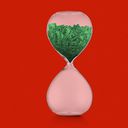Wall Street wonders how bad the economy has to get for Congress to act

Wall Street is working out how bad the economy will have to get for Congress to feel motivated to move on economic support.
Why it matters: A pre-Thanksgiving data dump showed more evidence of a floundering economic recovery. But the slow drip of crumbling economic data may not be enough to push Washington past a gridlock to halt the economic backslide.
What they're saying: "What I can't figure out is what what is going to need to happen to kind of light a fire under Congress to actually compromise and get something done," says Liz Ann Sonders, chief investment strategist at Charles Schwab, in an interview with Axios earlier this month.
- "You have to wonder whether that spark is going to be in the economic data or in the stock market."
Catch up quick: It’s unclear what will happen when President-elect Joe Biden, who has championed support for a big relief package, takes office — particularly if Republicans hold onto the Senate.
- There’s nearly no hope of additional support before year-end, and the current safety nets are set to expire.
What's going on: While you were readying for turkey, a parade of data revealed a potentially troubling combination of rising layoffs, falling income and plummeting consumer confidence.
But pick your economic narrative: Millions are suffering, but economic conditions haven’t completely buckled from the backdrop of an outbreak that’s worse than ever before. The data are nowhere as bad as they were when the pandemic first hit.
Details: Regular state unemployment filings, which are an imperfect proxy for layoffs, rose to nearly 828,000. It’s the first time initial claims have risen for two straight weeks since July. Add in applications for the Pandemic Unemployment Assistance program, and new claims hit 1.1 million.
- New claims continue to be worse than any time in pre-pandemic history. Still, they’ve fallen well-below the horrific print of nearly 7 million new weekly applicants at the onset of the pandemic.
- Beyond the headline figures, it’s clear that more people are running through regular state benefits as unemployment lingers for longer.
Income: Personal income fell 0.7% from the prior month, while consumer spending rose 0.5% in October. That’s stronger than economists expected, but still the slowest spending pace since the recovery began.
- The personal saving rate continued to slide to 13.6% in October. That’s still the highest level in years.
Consumer confidence: An index that measures consumers’ view of current economic conditions actually rose to 87 in November from 85.9 last month, according to the University of Michigan.
- But the expectations index (which measures how consumers feel about prospects in the economy over the next six months) dropped almost 9 points to 70.5.
The backdrop: The shiny stock market — betting on a vaccine, ongoing support from the Fed and some sort of coronavirus aid package — is thriving.
- As of Friday, the Dow is up 12.9% in November — its best month since January 1987, when the Dow rose 13.8%, according to FactSet.
- The S&P and Nasdaq are set for their best monthly performances since April, CNBC notes.
The bottom line: At the onset of the pandemic, previously unthinkable numbers of Americans were filing for unemployment and the stock market was cratering fast — pushing Congress to move quickly. The backdrop now is drastically different.
What's next: The November jobs report — out Friday morning — is expected to show the economy added 433,000 payrolls, according to a FactSet estimate.
- In any other context, that's a healthy job gain.
- But it’s paltry compared to the 4.8 million jobs added in June, when growth began to slow every month.